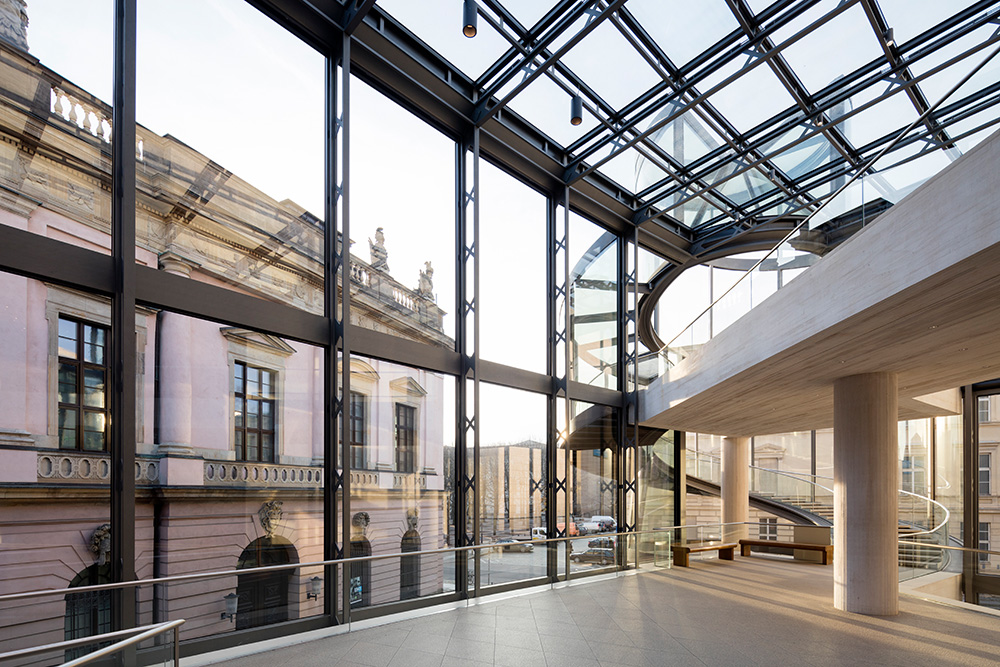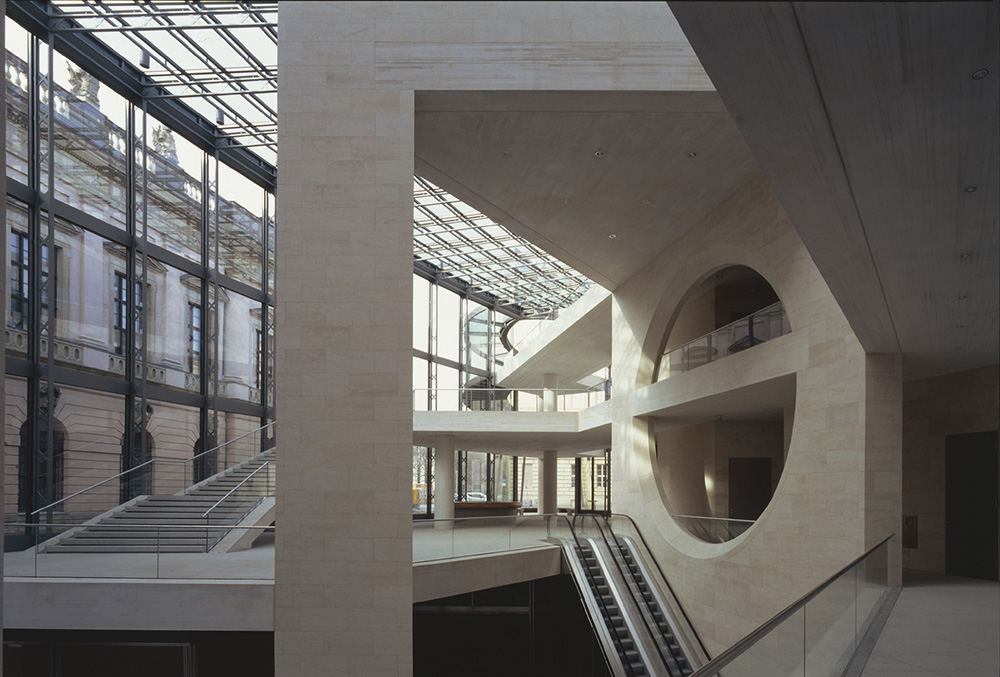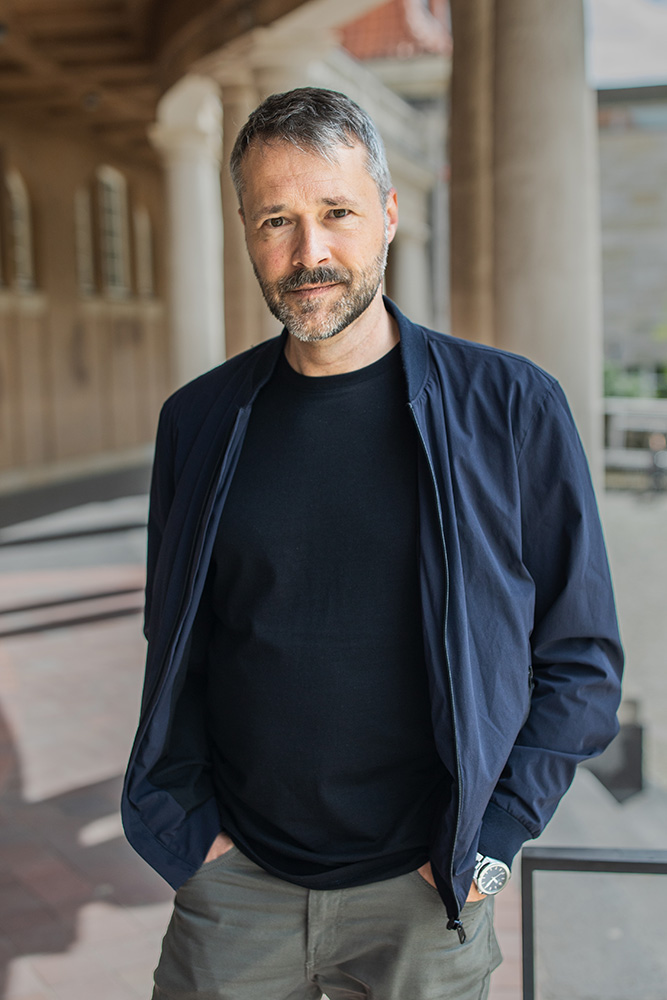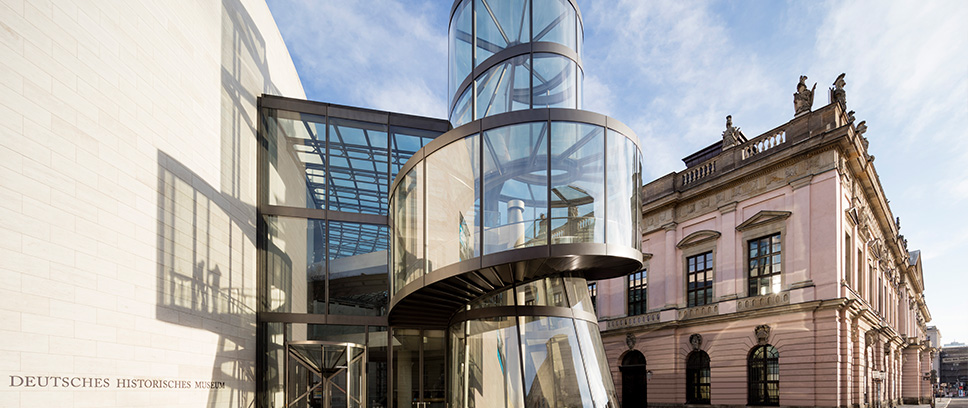
The Contrast Principle. Is the Pei Building a commentary on German history?
Frank Schmitz | 19 July 2023
Twenty years ago the Pei Building, the postmodern exhibition hall of the Deutsches Historisches Museum in Berlin, was opened. The Chinese-American architect I.M. Pei designed it as a contrast to the baroque Zeughaus. Art historian Frank Schmitz writes about the building’s architecture in this article.
The Pei Building of the Deutsches Historisches Museum (DHM), inaugurated in 2003, is characterised by contrasts. If you approach the exhibition hall from the boulevard Unter den Linden, you first see the glass spiral staircase. It stands out from its surroundings, which are marked by the angular, stone elements of the Neue Wache (New Guardhouse), the Palais am Festungsgraben (Palace on the Moat), and the Zeughaus (the former Armoury). But the further you look into the depth of the building – in the direction of the Museum Island – the more the rectangular, stone and regular elements of the house stand out.
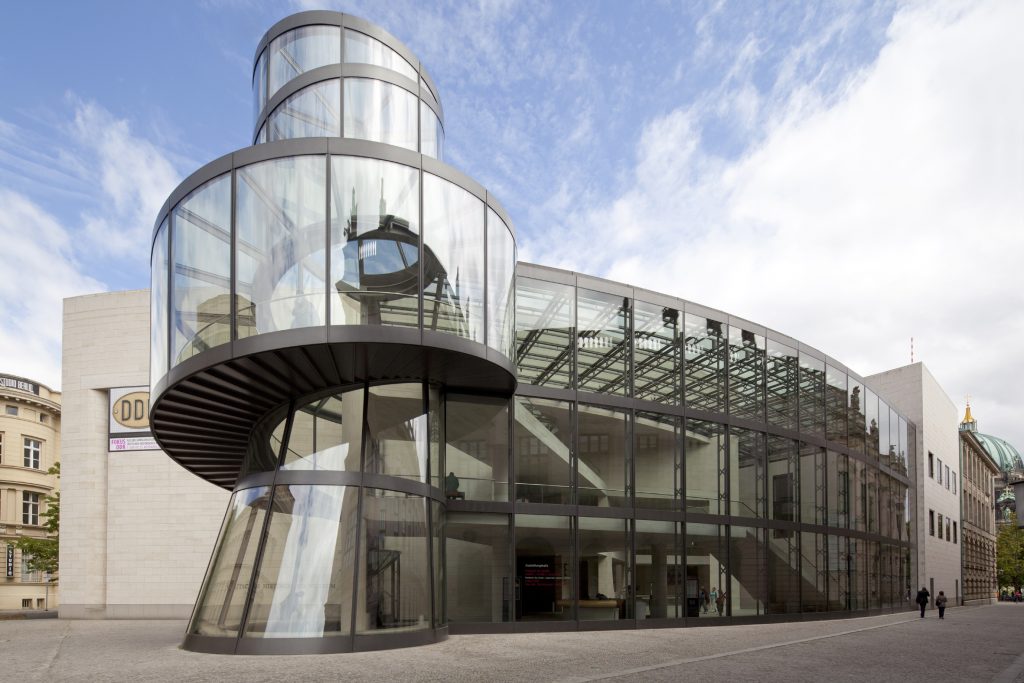
The contrasts thus continue on into the inside of the building, where square, round and acute-angled forms alternate with one another. The luminous, building-high hall with adjacent showrooms is the setting of this clash of contrasts and at the same time it is a room of intermediation in which a number of these different elements merge together. While the more massive part of the building on the Museum Island side is arranged in a rectangular-cubic and hermetically enclosed manner, increasingly complex forms and transparent elements can be found on the side of the entrance, opposite the Palais am Festungsgraben: a large, circular wall penetration, whereby the tapered entrance hallway ends in the staircase, where a cylindrical glass form is compounded with a spiral element.
And yet Pei succeeded in binding together this variety of two-dimensional and sculptural elements in a narrow space to form a unified whole. To achieve this, Pei not only allowed the contrasts to clash rigorously with one another, but also in part to let them act as an intermediary insofar as individual elements grew out of others: thus, for example, the grid of the glass ceiling in the entrance hallway is strictly orthogonal in the rear part, while in the direction of the entrance the glass rectangles are slightly curved. In this way they merge into the form of a parallelogram with curved sides, suggesting both triangular and rounded forms.
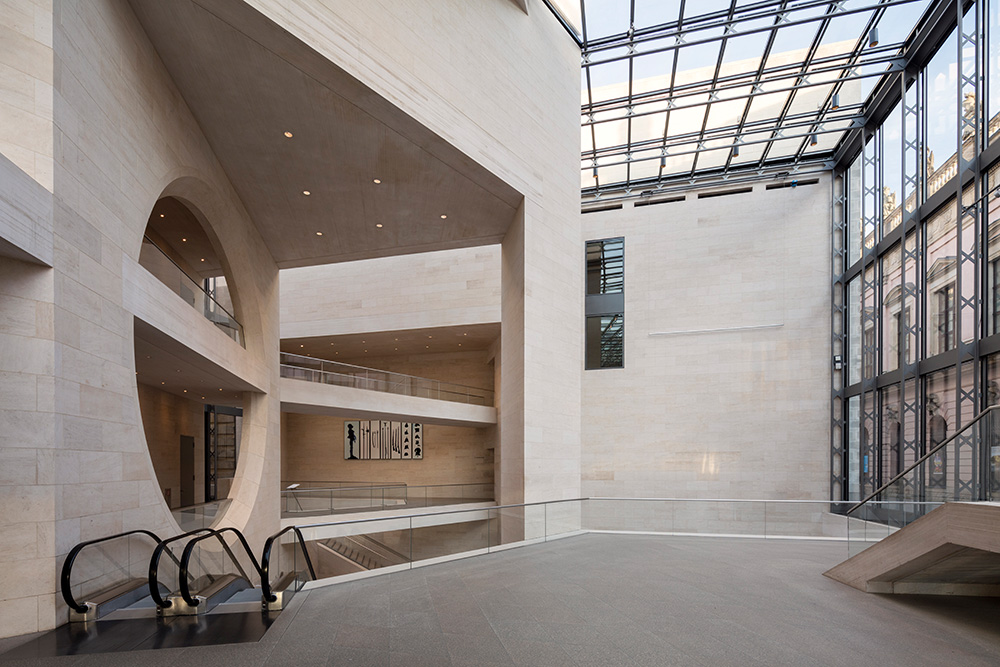
This design, however, is not just a conceptual finger exercise for its own sake: Pei was reacting to the irregular layout of the property, on which a simple, stereometric building form – such as a cube or plain V-form – could not have been realised. At the same time, this extension wing of the DHM represents a synthesis of I.M. Pei’s earlier museum projects, which often revolved around the matter of regularity and irregularity. Thus, for example, in the 1980s he aligned the famous glass pyramids in the courtyard of the Louvre in a strictly axial line with the structure of the Louvre’s orthogonal inner courtyard. By contrast, in the case of the East Building of the National Gallery of Art in Washington D.C., he had already in the 1970s begun playing on many levels with the opposites of regularity and deviations from the rule.
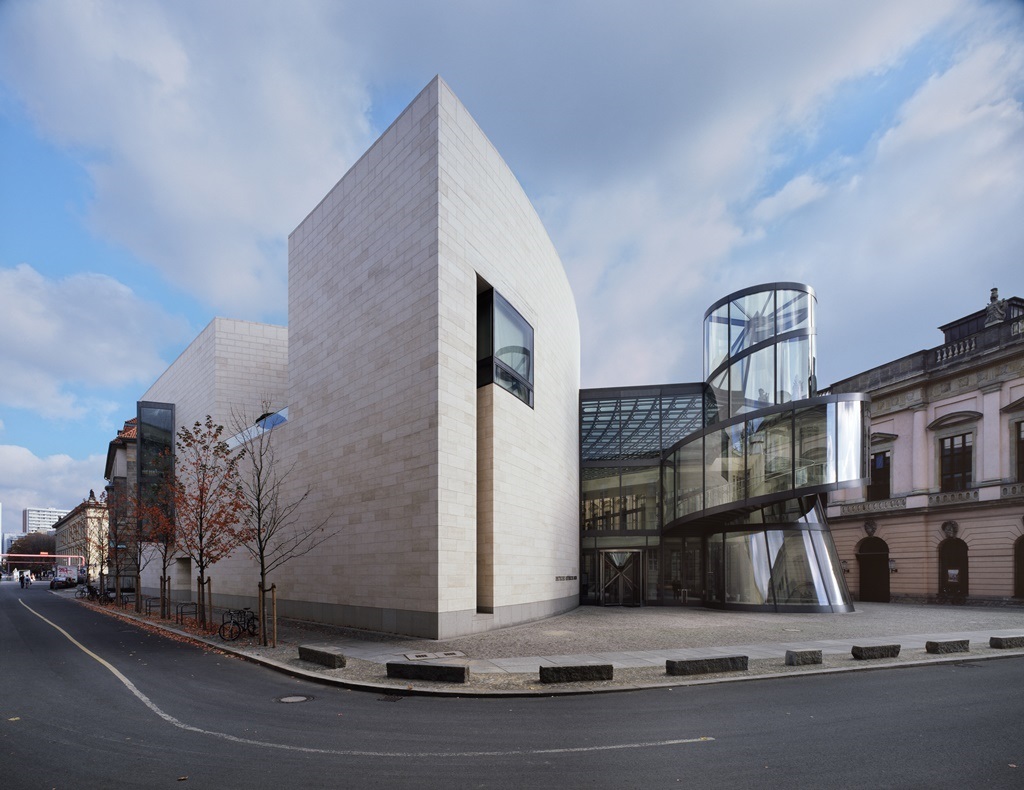
And yet the DHM’s extension building is also a commentary on a specific place. By means of the irregular distribution of mass, the exhibition hall forms a counter-image to the strictly symmetrical structure of the original part of the museum, the baroque building that immediately borders on the extension. The symmetrical composition of its façade is in many ways an expression of regularity. The window pediments alternate between triangular and segment forms according to a strict pattern, the centre axis is emphasised, and the side projections are organised in a strictly hierarchical way. The choice of the Doric column arrangement follows a classical decorum, i.e., a concept of the “appropriateness” of the construction forms originating in classical antiquity according to which a powerfully martial arrangement was considered suitable for military buildings. At the same time, the idea of an ordered and ordering architecture also had its origin in antiquity, namely in the oldest comprehensive, extant treatise on architecture – Vitruvius’s Ten Books on Architecture – where arithmetic is described as the basic principle with which “dimensional settings are developed and difficult questions of the proportions of symmetry are solved through geometric laws and rules” (Vitruvius, Chap. 1, § 4). Pei resolutely distances himself from this idea in his Berlin building and explicitly expresses this difference. In an interview with the newspaper “Die Zeit” in 2003 he acknowledged that he is driven by the desire to “break out of inflexible patterns.” The Pei Building can therefore be understood, as it were, as a commentary on the salient concepts of Western architecture as well as a counterpart to the concrete urban surroundings that were substantially influenced by these ideas.
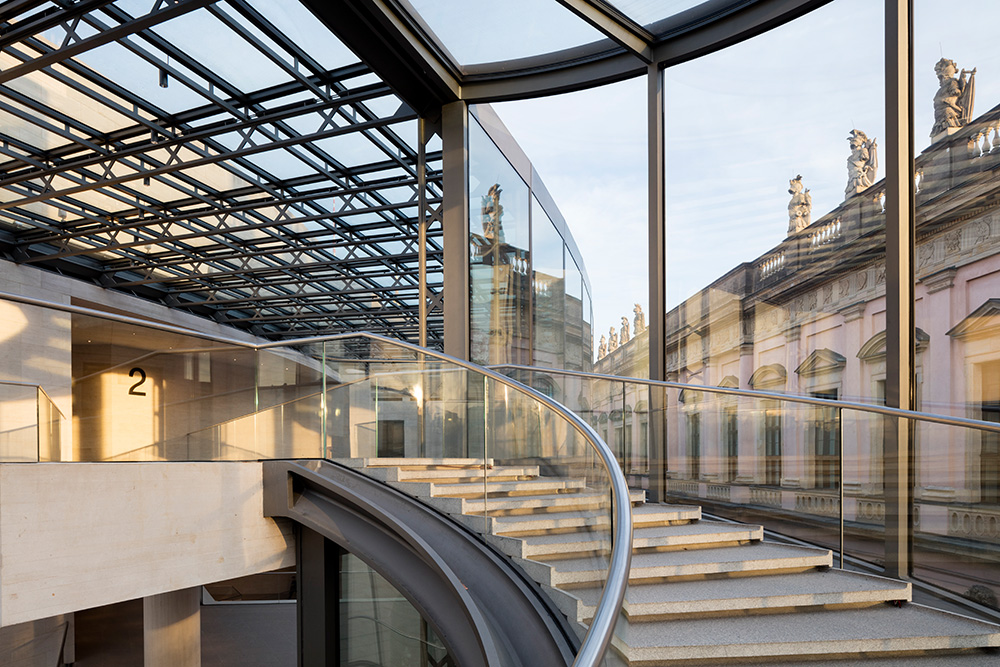
That this message emanates of all places from the building of a history museum might very well be a coincidence. But perhaps there is unwittingly also a bit of truth at its core insofar as Pei’s balanced dalliance with rule and rule-breaking, order and seeming coincidence, can also be seen as a commentary on history. There are striking indications that above all German history must be seen to a great degree as a contest between order and chaos, between hierarchy and uprising. If we assume that in Pei’s building many contrasting elements seem to come together by chance, while others are melded into an equilibrium through creative means, is the exhibition hall then in this way also a commentary on history?
|
|
Prof. Dr. Frank SchmitzFranz Schmitz is professor of architectural history at the art-historical seminar of the University of Hamburg. He previously acted as guest and substitute professor at the Berlin Free University and the Ruhr University Bochum. Since 2022 he is a member of the Hamburg Monument Council. |
